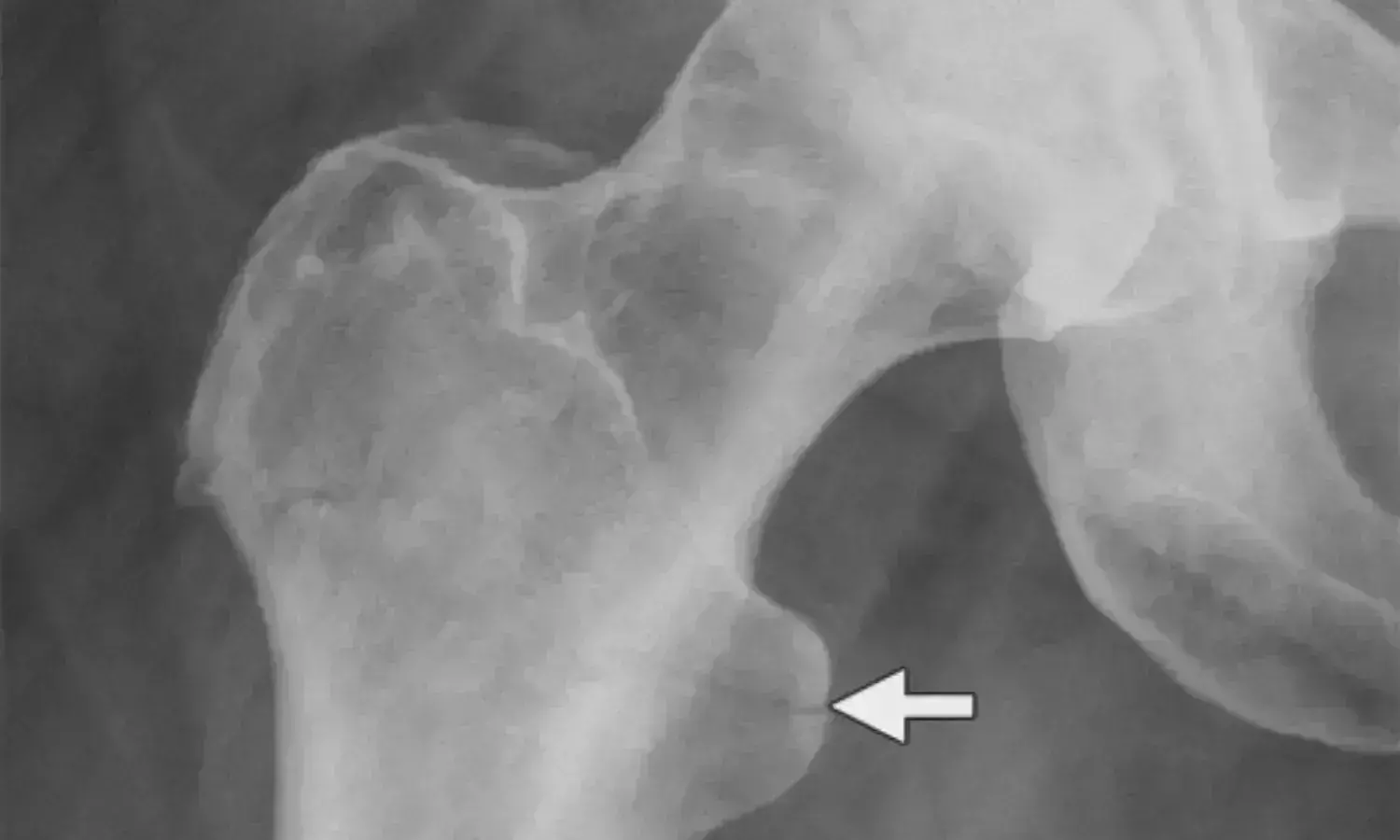- Home
- Medical news & Guidelines
- Anesthesiology
- Cardiology and CTVS
- Critical Care
- Dentistry
- Dermatology
- Diabetes and Endocrinology
- ENT
- Gastroenterology
- Medicine
- Nephrology
- Neurology
- Obstretics-Gynaecology
- Oncology
- Ophthalmology
- Orthopaedics
- Pediatrics-Neonatology
- Psychiatry
- Pulmonology
- Radiology
- Surgery
- Urology
- Laboratory Medicine
- Diet
- Nursing
- Paramedical
- Physiotherapy
- Health news
- Fact Check
- Bone Health Fact Check
- Brain Health Fact Check
- Cancer Related Fact Check
- Child Care Fact Check
- Dental and oral health fact check
- Diabetes and metabolic health fact check
- Diet and Nutrition Fact Check
- Eye and ENT Care Fact Check
- Fitness fact check
- Gut health fact check
- Heart health fact check
- Kidney health fact check
- Medical education fact check
- Men's health fact check
- Respiratory fact check
- Skin and hair care fact check
- Vaccine and Immunization fact check
- Women's health fact check
- AYUSH
- State News
- Andaman and Nicobar Islands
- Andhra Pradesh
- Arunachal Pradesh
- Assam
- Bihar
- Chandigarh
- Chattisgarh
- Dadra and Nagar Haveli
- Daman and Diu
- Delhi
- Goa
- Gujarat
- Haryana
- Himachal Pradesh
- Jammu & Kashmir
- Jharkhand
- Karnataka
- Kerala
- Ladakh
- Lakshadweep
- Madhya Pradesh
- Maharashtra
- Manipur
- Meghalaya
- Mizoram
- Nagaland
- Odisha
- Puducherry
- Punjab
- Rajasthan
- Sikkim
- Tamil Nadu
- Telangana
- Tripura
- Uttar Pradesh
- Uttrakhand
- West Bengal
- Medical Education
- Industry
Nonoperative management viable option for proximal femoral fractures in frail patients

Netherlands: Nonoperative management of proximal femoral fractures is a viable option for frail institutionalized patients having limited life expectancy, states a recent study in the journal JAMA Surgery. This suggests that for this patient population, surgery should not be a foregone conclusion.
In frail patients with limited life expectancy, decision-making on management of proximal femoral fractures is challenging but there is a need to prevent surgical overtreatment. Current literature provides limited insight into the true outcomes of nonoperative management and operative management in this patient population.
Pieter Joosse, Department of Surgery, Noordwest Ziekenhuisgroep, the Netherlands, and the colleagues aimed to examine the outcomes of nonoperative management compared to operative management of proximal femoral fractures in institutionalized frail older patients with limited life expectancy in a multicenter cohort study.
The study was conducted between September 1, 2018, and April 25, 2020 at 25 hospitals across the Netherlands with a 6-month follow-up period. The study included patients aged 70 years or older, frail, and institutionalized and sustained a femoral neck or pertrochanteric fracture.
The term frail implied the presence of at least 1 of the following characteristics : malnutrition (body mass index [calculated as weight in kilograms divided by height in meters squared] <18.5) or cachexia, severe comorbidities (American Society of Anesthesiologists physical status class of IV or V), or severe mobility issues (Functional Ambulation Category 2).
Exposure was shared decision-making (SDM) followed by nonoperative or operative fracture management.
The EuroQol 5 Dimension 5 Level (EQ-5D) utility score by proxies and caregivers was the primary outcome. Secondary outcome measures were pain level (assessed by the Pain Assessment Checklist for Seniors With Limited Ability to Communicate), QUALIDEM (a dementia-specific quality-of-life instrument for persons with dementia in residential settings) scores, quality of dying (Quality of Dying and Death Questionnaire), and adverse events (Clavien-Dindo classification), mortality, treatment satisfaction (numeric rating scale).
Key findings of the study include:
- Of the 172 enrolled patients with proximal femoral fractures (median age, 88 years; 135 women [78%]), 88 opted for nonoperative management and 84 opted for operative management.
- The EQ-5D utility scores by proxies and caregivers in the nonoperative management group remained within the set 0.15 noninferiority limit of the operative management group (week 1: 0.17 vs 0.26; week 2: 0.19 vs 0.28; and week 4: 0.24 vs 0.34).
- Adverse events were less frequent in the nonoperative management group vs the operative management group (67 vs 167).
- The 30-day mortality rate was 83% (n = 73) in the nonoperative management group and 25% (n = 21) in the operative management group, with 26 proxies and caregivers (51%) in the nonoperative management group rating the quality of dying as good-almost perfect.
- Treatment satisfaction was high in both groups, with a median numeric rating scale score of 8.
"Nonoperative management of proximal femoral fractures following the SDM process is a viable treatment option for institutionalized frail patients with limited life expectancy," wrote the authors. "A return to preinjury levels of independence ormobility was reached in some patients who were surgically treated, and a postoperative period without AEs was rare."
"Surgery in this specific patient population therefore should not be a foregone conclusion," they concluded.
Reference:
"Evaluation of Quality of Life After Nonoperative or Operative Management of Proximal Femoral Fractures in Frail Institutionalized Patients: The FRAIL-HIP Study," was published in the journal JAMA Surgery.
DOI: 10.1001/jamasurg.2022.0089
Dr Kamal Kant Kohli-MBBS, DTCD- a chest specialist with more than 30 years of practice and a flair for writing clinical articles, Dr Kamal Kant Kohli joined Medical Dialogues as a Chief Editor of Medical News. Besides writing articles, as an editor, he proofreads and verifies all the medical content published on Medical Dialogues including those coming from journals, studies,medical conferences,guidelines etc. Email: drkohli@medicaldialogues.in. Contact no. 011-43720751


